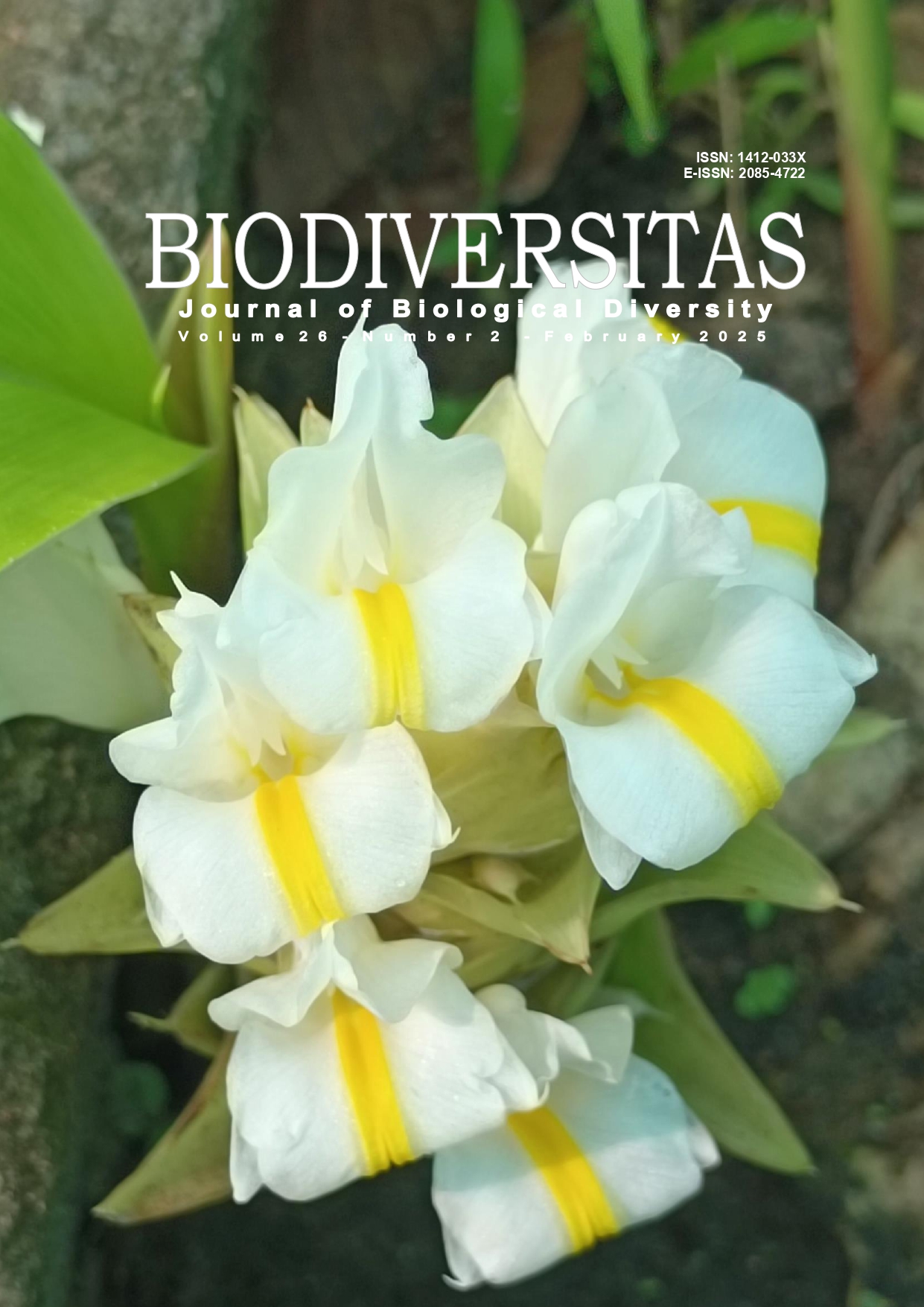Bioactive compound profile of sun-dried cubeb (Piper cubeba) fruit extract
##plugins.themes.bootstrap3.article.main##
Abstract
Abstract. Hadi RF, Kustantinah, Muhlisin, Martien R. 2025. Bioactive compound profile of sun-dried cubeb (Piper cubeba) fruit extract. Biodiversitas 26: 662-669. Piper cubeba is a herbal plant that is commonly used to treat digestive and respiratory diseases because it has biological activity related to bioactive compounds. This study aimed to analyze the profile of bioactive compounds in cubeb fruit, focusing on tannins, phenols, and flavonoids. Tannins are a type of polyphenol with antioxidant properties, phenols are organic compounds with various biological activities, and flavonoids are a diverse group of phytonutrients with antioxidant and anti-inflammatory effects. These compounds were extracted using different solvents, and Gas Chromatography-Mass Spectrometry (GC/MS) was employed to profile them. The results indicate that 96% ethanol is more effective at extracting compounds compared to 70% ethanol and distilled water. The percentage yield of the sun-dried cubeb extract varies significantly with different solvents (P<0.05). Quantitative analysis of cubeb fruit extracts demonstrated that flavonoid content was highest with 96% ethanol (27.85±0.53 mg QE/g), followed by 70% ethanol (10.84±0.34 mg QE/g) and distilled water (2.39±0.03 mg QE/g). Total phenol content was also greatest with 96% ethanol (45.23±0.23 mg GAE/g), compared to 70% ethanol (36.04±0.33 mg GAE/g), and distilled water (12.60±0.42 mg GAE/g). For tannins, 96% ethanol yielded the highest concentration (27.85±0.25 mg TAE/g), with lower levels in distilled water (7.81±0.32 mg TAE/g) and 70% ethanol (6.56±0.07 mg TAE/g). These significant differences (P<0.05) highlight the potential of cubeb fruit as a valuable source of bioactive compounds, suggesting its suitability for functional food applications.
##plugins.themes.bootstrap3.article.details##
Most read articles by the same author(s)
- MUHLISIN, JOHAN ISKANDAR, BUDHI GUNAWAN, MARTHA FANI CAHYANDITO, Vegetation diversity and structure of urban parks in Cilegon City, Indonesia, and local residents’ perception of its function , Biodiversitas Journal of Biological Diversity: Vol. 22 No. 7 (2021)
- BAMBANG SUWIGNYO, LUKMANA ARIFIN, NAFIATUL UMAMI, MUHLISIN, BAMBANG SUHARTANTO, The performance and genetic variation of first and second generation tropical alfalfa (Medicago sativa) , Biodiversitas Journal of Biological Diversity: Vol. 22 No. 6 (2021)
- KUSTANTINAH, NUR HIDAYAH, CUK TRI NOVIANDI, ANDRIYANI ASTUTI, DIMAS HAND VIDYA PARADHIPTA, Nutrients content of four tropical seaweed species from Kelapa Beach, Tuban, Indonesia and their potential as ruminant feed , Biodiversitas Journal of Biological Diversity: Vol. 23 No. 12 (2022)
- EKA HANDAYANTA, RENDI FATHONI HADI, Screening the anthelmintic effects of leaves and fruits extracts from various Acacia species as a potential feed for small-ruminant animals , Biodiversitas Journal of Biological Diversity: Vol. 24 No. 6 (2023)

